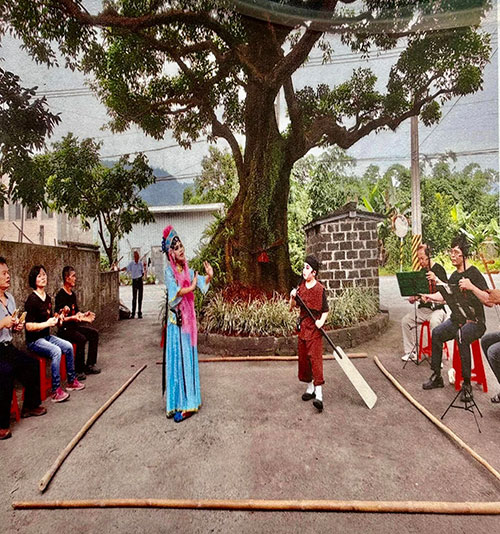Open-Air Stage (1920-1950s, 1970-now)
During this period, Taiwanese Opera underwent an evolution. It assimilated various musical styles and performance practices from Chinese immigrants, resulting in a more refined art form. Open-air Taiwanese Opera emerged as what is now known as traditional Taiwanese Opera. Over time, Taiwanese Opera performances also became common in temple settings, serving both as a form of worship to the gods and as entertainment for the audiences. Women began to appear on the Taiwanese Opera stage. However, casting still adhered to the tradition of "men portraying male roles, and women portraying female roles."
In-Door Stage (1920-1950s)
In the 1920s, under Japanese colonial rule, numerous Chinese Opera troupes visited Taiwan to showcase their performances. Inspired by the stage decorations, martial arts choreography, and musical compositions of these troupes, many Taiwanese Opera groups incorporated these elements into their own performances. This integration led to the rise in popularity of Taiwanese Opera, with numerous theaters inviting these troupes to perform. Successful Taiwanese Opera shows could run for several months in theaters. The era of indoor stage Taiwanese Opera remained popular until the advent of television.
In the 1940s, with the rise in women's status and a shortage of men during the war, women had more performance opportunities. Audiences were amazed by how lifelike female performers portrayed the male roles. Cross-casting gradually became mainstream. The greater the contrast between an actor's stage persona and their real identity, the more it showcases their acting prowess.












